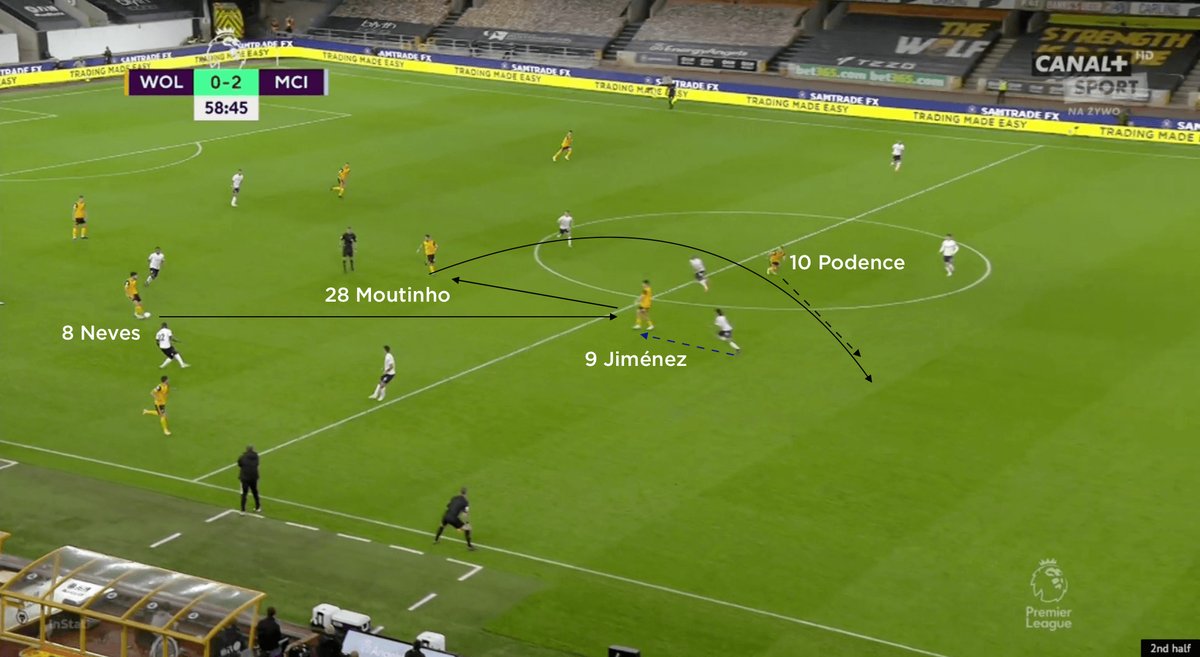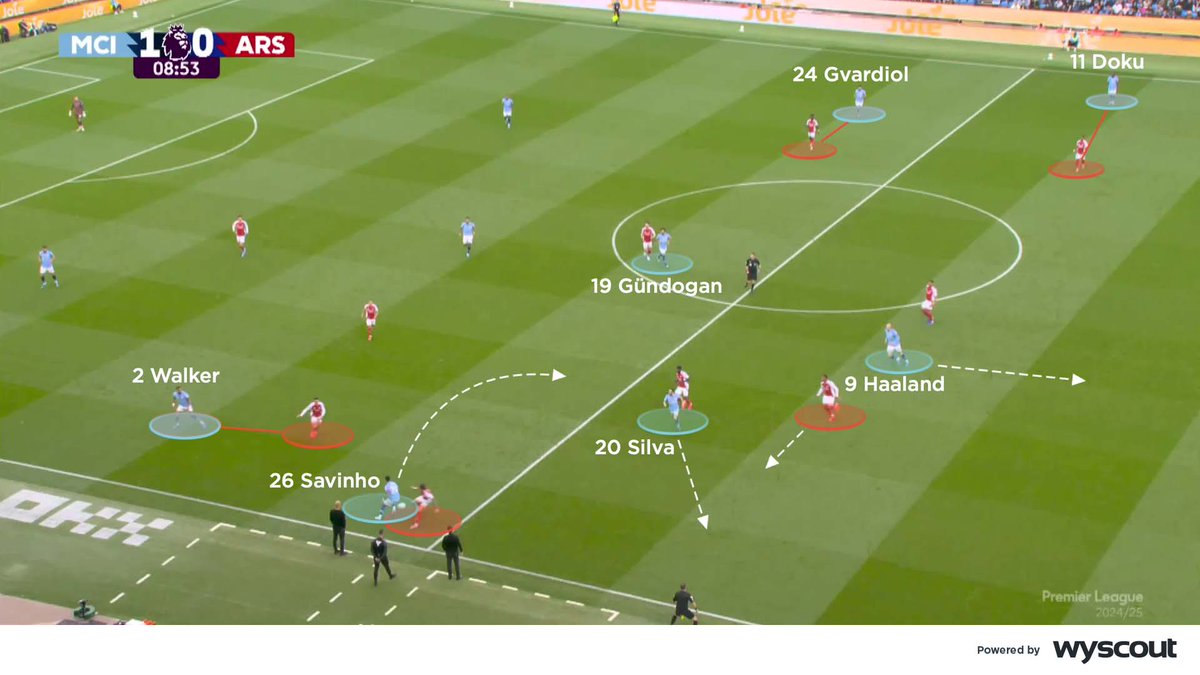THREAD! 👇 Manchester City started their 2020/21 Premier League campaign with a win over Wolves. Our coaches give you their tactical insight into the game 🐺 #WOLMCI 🔵
🔍 Wolves, shorn of Diego Jota, were organised into a 3-5-2 formation led by the front two of Daniel Podence and Raúl Jiménez (1/8)
🐺 #Wolves #WOLMCI
🐺 #Wolves #WOLMCI

🔍 When they were defending that 3-5-2 became a 5-3-2, via wing-backs Adama Traoré and Fernando Marçal – later replaced by Ruben Vinagre – withdrawing into defence (2/8)
🐺 #Wolves #WOLMCI
🐺 #Wolves #WOLMCI

🔍 Through Pedro Neto advancing from central midfield, and their wing-backs also advancing, Wolves operated with five points of attack across the pitch (3/8)
🐺 #Wolves #WOLMCI
🐺 #Wolves #WOLMCI

🔍 They strung more passes together during the second half, and complemented those with combinations that helped them to advance into the final third, but were wasteful in front of goal (4/8)
🐺 #Wolves #WOLMCI
🐺 #Wolves #WOLMCI

🔍 Manchester City were organised into a 4-2-3-1 formation that featured Rodri and Fernandinho at the base of their midfield (5/8)
🔵 #MCFC #WOLMCI
🔵 #MCFC #WOLMCI

🔍 They remained in that 4-2-3-1 while they were defending; Kyle Walker, John Stones, Nathan Aké and Benjamin Mendy formed their back four (6/8)
🔵 #MCFC #WOLMCI
🔵 #MCFC #WOLMCI

🔍 When Walker and Mendy advanced from full-back, Phil Foden drifted infield to feature as an attacking central midfielder, and Raheem Sterling and Kevin De Bruyne operated as second strikers (7/8)
🔵 #MCFC #WOLMCI
🔵 #MCFC #WOLMCI

🔍 City built possession intelligently; they formed a back three to create a three-on-two, circulated the ball, and either advanced into half-spaces or drew one of Wolves’ midfielders before advancing (8/8)
🔵 #MCFC #WOLMCI
🔵 #MCFC #WOLMCI

• • •
Missing some Tweet in this thread? You can try to
force a refresh
















